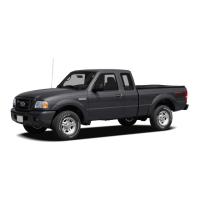3. Locate the correct anchor for the selected seating position.
The tether anchor is located on the
rear lower portion of the passenger
seat.
4. Clip the tether strap to the
anchor.
2008 Ranger (ran)
Owners Guide (post-2002-fmt)
USA (fus)
Seating and Safety Restraints
104

